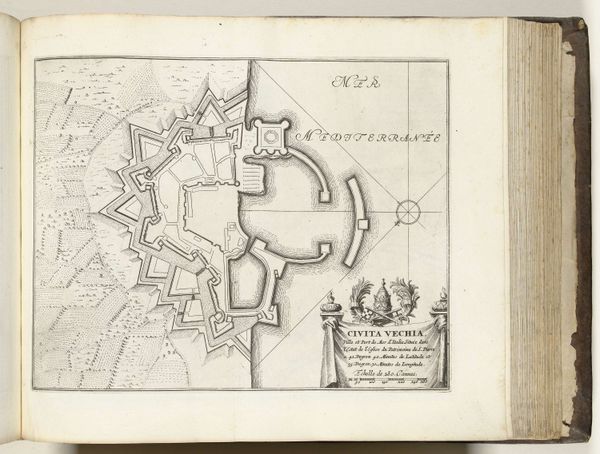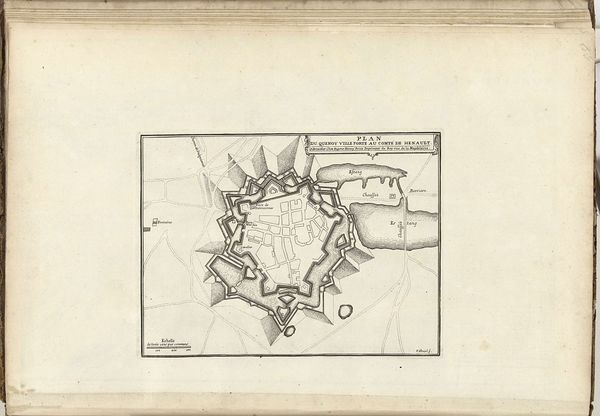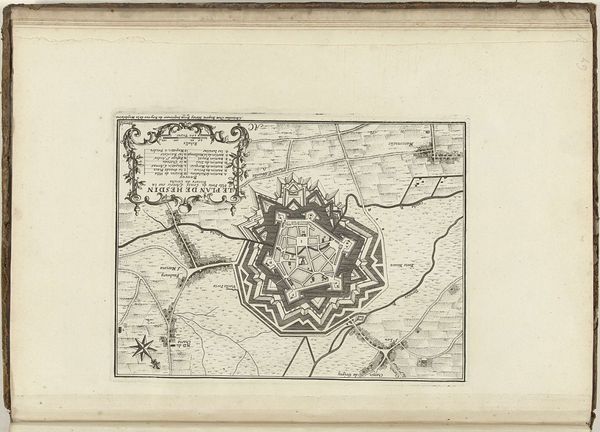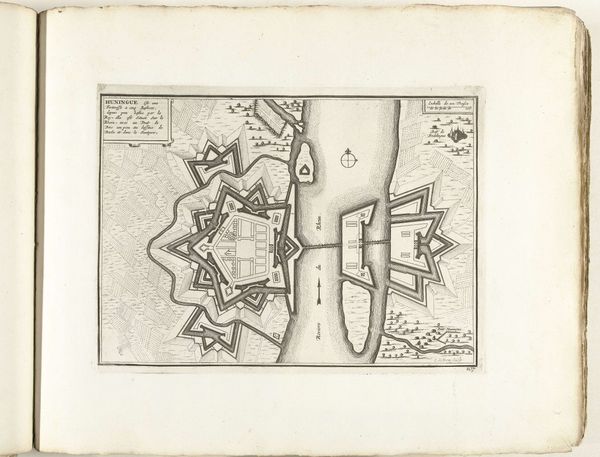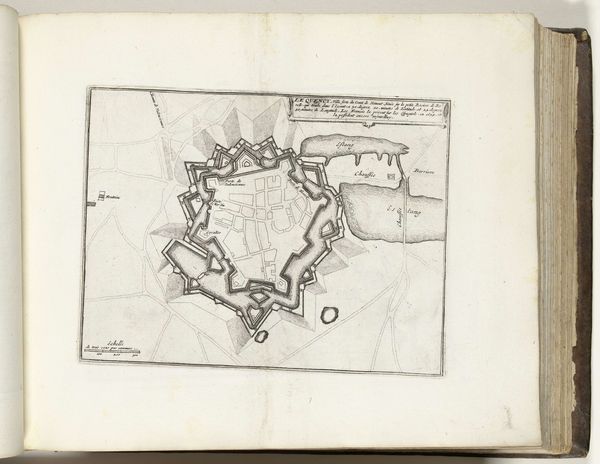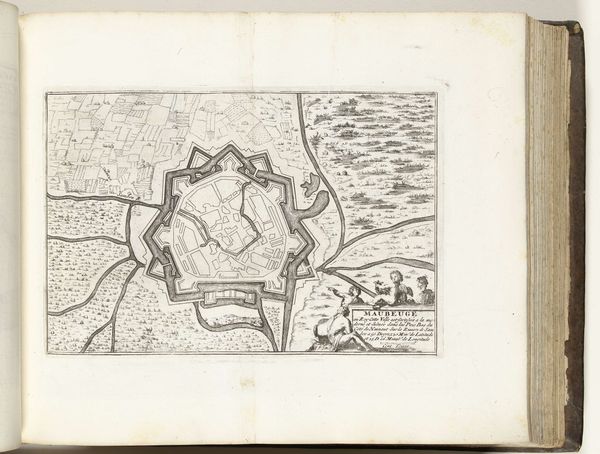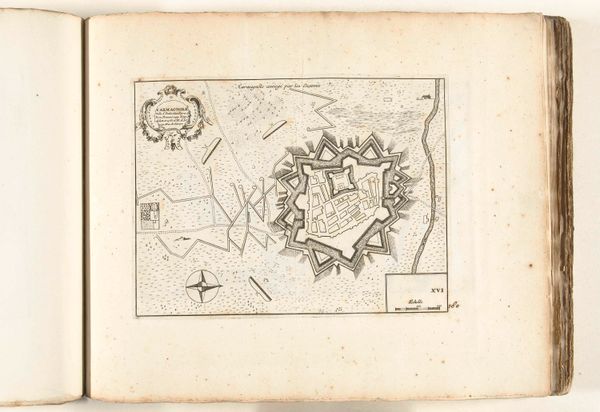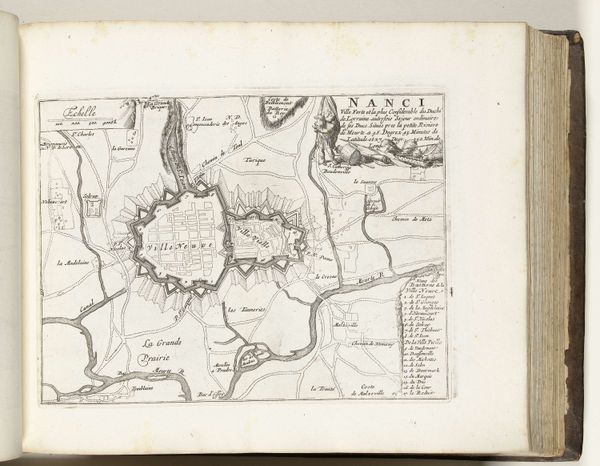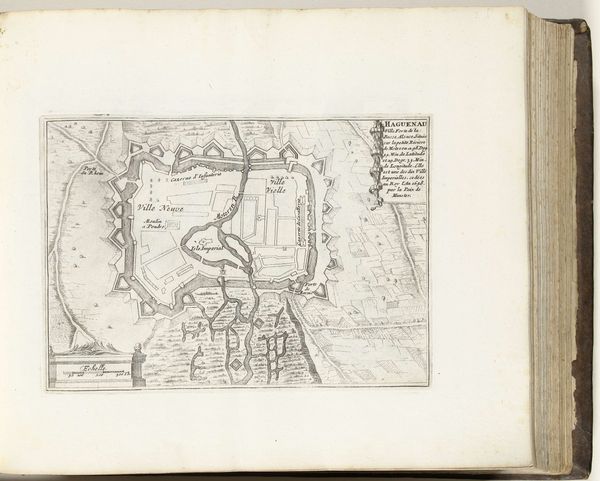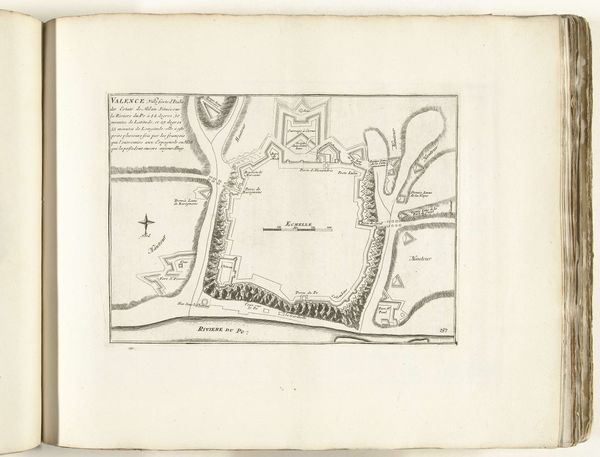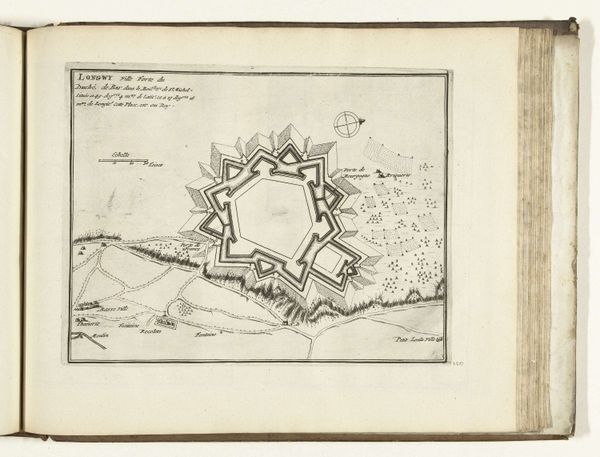
#
aged paper
#
pen sketch
#
personal sketchbook
#
sketchwork
#
ink drawing experimentation
#
pen-ink sketch
#
pen work
#
sketchbook drawing
#
storyboard and sketchbook work
#
sketchbook art
Dimensions: height 225 mm, width 296 mm
Copyright: Rijks Museum: Open Domain
Editor: So, here we have an ink drawing from around 1702, titled *Plattegrond van Civitavecchia*, an anonymous piece in the Rijksmuseum collection. It feels very technical, almost like an architectural blueprint, but something about it feels more artistic. What do you see in this piece? Curator: It is indeed technical, yet the social and political underpinnings are far from neutral. The elaborate fortifications immediately point to anxieties of the period. Civitavecchia, as a port city, held immense strategic and economic importance. Maps weren't simply about geographical accuracy; they were tools of power. Editor: Power in what sense? Curator: Control, dominance. The star-shaped fort, so meticulously rendered, is a symbol of military might. Think about who commissioned such a detailed plan. Likely a ruling power keen to project strength and control over its territory. Consider the symbolic language: the orderly lines, the calculated angles. It all speaks to an era of intense geopolitical maneuvering. How do you see the artistry intersecting with this political intent? Editor: Well, maybe the artistry helps legitimize the power. By making it visually impressive, the drawing emphasizes the importance of the city and its defenses. Curator: Precisely. The very act of depicting Civitavecchia in such a grand manner elevates its status and reinforces the authority that controls it. Consider also who had access to such images. The circulation of such plans served specific socio-political ends, informing military strategy but also shaping public perception of power. Editor: So it’s more than just a map, it’s a statement. That's fascinating. Curator: Exactly. Analyzing art like this drawing requires us to unpack the complex web of social, cultural, and political forces that shaped its creation and reception. Editor: I'll never look at an old map the same way again!
Comments
No comments
Be the first to comment and join the conversation on the ultimate creative platform.
